2023 Learning Trends: How to Stay Ahead of Competition
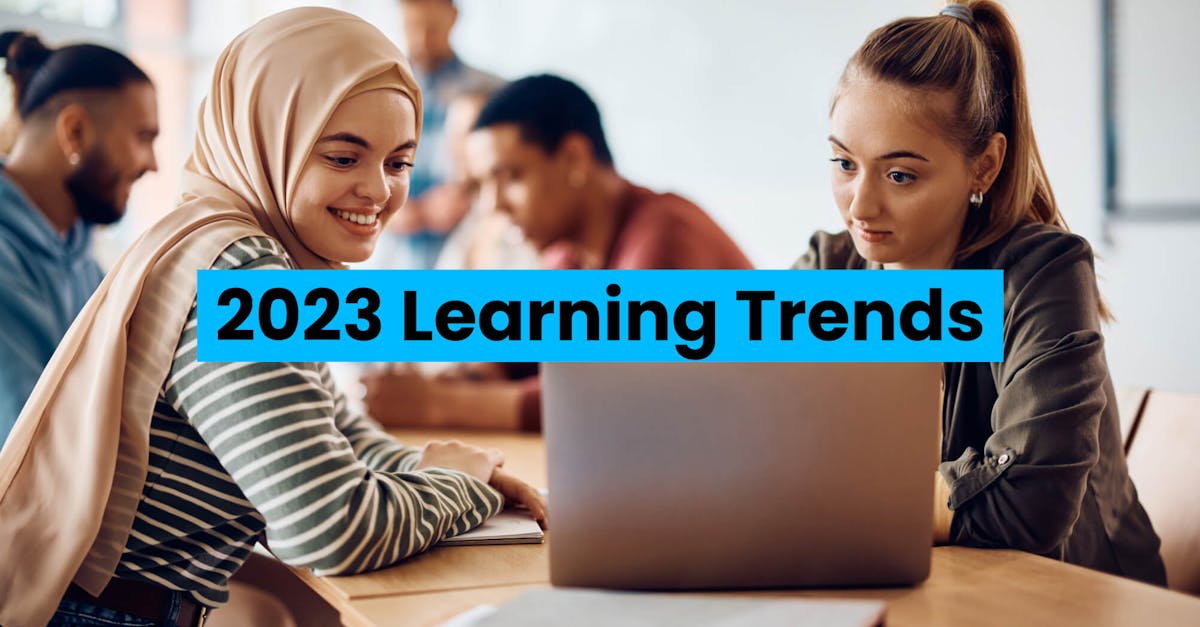
Staying ahead of your competition requires upskilling your learners by embracing the latest learning trends of 2023. These trends can enhance their knowledge, skills, and competencies, securing personal and professional growth in an ever-changing world.
We’ll explore the top learning trends of 2023 and share insights on how you and your learners can embrace these trends to stay ahead of the organizational competition. Here are the top learning and development (L&D) training trends to watch out for.
1. The Shift toward Continuous Learning
Continuous learning has become the cornerstone of personal and professional growth. In 2023, the importance of lifelong learning and upskilling will only continue to rise. With the rapid pace of technological advancements and changing job market dynamics, your learners need to be able to easily adapt and be open to learning and training throughout their careers.

Continuous learning offers numerous benefits, including staying relevant, expanding career opportunities, and boosting confidence in one's abilities.
One way to guarantee that your learners are able to have continuous learning is by using a user-friendly and intuitive LMS like EdApp. You can customize any of EdApp’s corporate learning and development programs according to your organization’s and your learners' needs.
Get the best training platform by signing up with EdApp today.
2. Microlearning: Bite-sized Knowledge
Microlearning, as the name suggests, involves delivering knowledge in small, easily digestible chunks. Learners can access bite-sized lessons or resources on various devices, making learning more accessible and convenient. This trend allows learners to focus on specific topics or skills, allowing targeted learning and reducing information overload.

Microlearning also promotes knowledge retention and learner engagement by using short attention spans and delivering instant feedback.
In 2023, microlearning is set to gain even more traction due to its effectiveness and efficiency.
3. Adaptive Learning: Personalized Training
Adaptive learning is a data-driven approach that tailors training content to your learner's learning styles. By taking advantage of artificial intelligence and machine learning algorithms, adaptive learning platforms can dynamically adjust the learning experience based on the learner's progress, preferences, and skills.
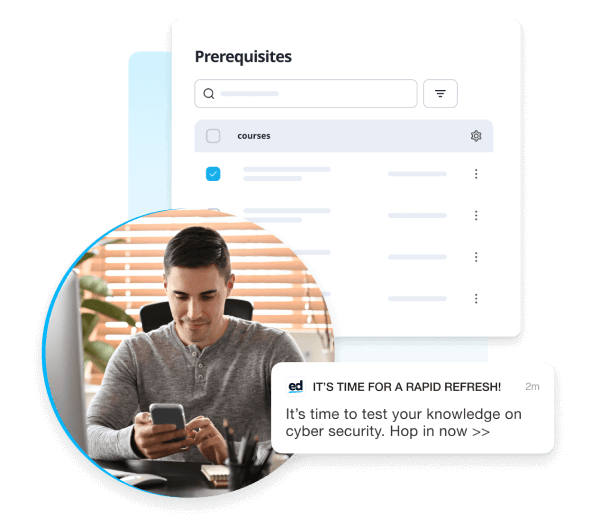
From here on out, personalized training will continue to gain momentum as it promotes self-paced learning, increases engagement, and maximizes learning outcomes.
4. Virtual Reality (VR) and Augmented Reality (AR)
VR creates simulated environments that allow learners to explore and interact with virtual objects, while AR overlays digital information in the real world. Because of this, VR and AR technologies have revolutionized various industries, including training.

These technologies make complex concepts tangible and foster experiential learning, particularly in fields like medicine, engineering, and vocational training.
5. Gamification: Learning through Play
Gamification incorporates game elements into the learning process, making it more engaging and enjoyable. Gamification will play a significant role in training, motivating learners through rewards, competition, and progress tracking.
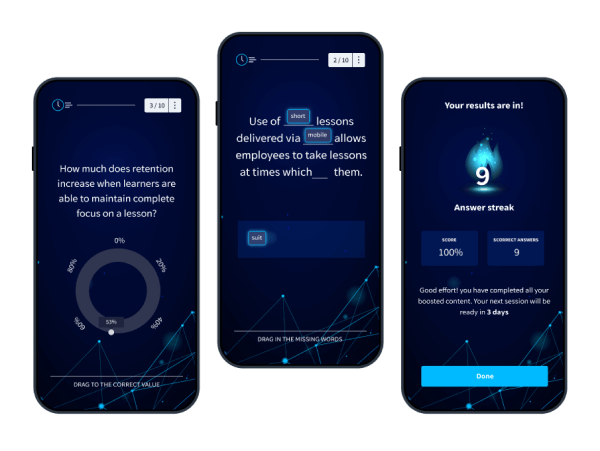
By introducing challenges, leaderboards, and badges, trainers can create a sense of achievement and foster healthy competition among learners. Gamified learning environments promote active participation, critical thinking, problem-solving, and collaboration.
6. Social Learning: Collaborative Knowledge
Social learning emphasizes the importance of interaction and collaboration in the learning process. Learners can connect with peers, share knowledge, and collaborate on projects, fostering a sense of community and facilitating collective intelligence.

Social learning platforms let learners engage in discussions, seek feedback, and expand their networks, enhancing both personal and professional development.
7. Mobile Learning: On-the-go training
The omnipresence of mobile devices has paved the way for mobile learning. We almost can’t live without our smartphones. That’s why learning and development professionals continue to design training around mobile devices. This allows learners to access training content anytime and anywhere.
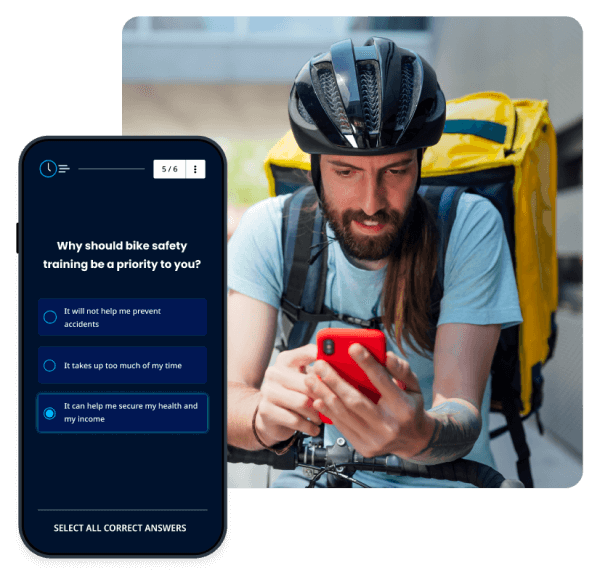
With mobile apps, professional quality-podcast episodes, and responsive learning platforms, learners can fit learning into their busy schedules. Mobile learning offers flexibility, personalized learning experiences, and the ability to use multimedia resources. But, it’s crucial to make sure the design and delivery of mobile learning are user-friendly and accessible across different devices and screen sizes.
EdApp is a mobile-friendly learning platform that you and your learners can take wherever you go. It helps them learn whenever and wherever they want, and it helps you keep track of their progress in your pocket.
8. Artificial Intelligence (AI) in Corporate Learning and Development
Artificial Intelligence (AI) has the potential to revolutionize training by automating administrative tasks, personalizing instruction, and giving intelligent feedback. In 2023, AI already plays an important role in the learning experience, all thanks to AI models such as ChatGPT.
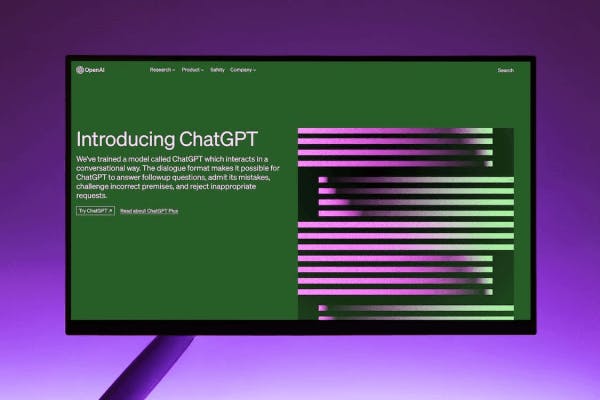
AI-powered chatbots can offer instant support to learners, while adaptive learning systems can tailor content to individual needs. Additionally, AI can help in assessing learner performance, identifying knowledge gaps, and recommending personalized learning pathways.
9. Data-Driven Learning Analytics
Data-driven learning analytics involves collecting and analyzing learner data to gain insights into their learning behaviors and preferences. Learning analytics empowers trainers and organizations to make informed decisions about instructional design and learner support.
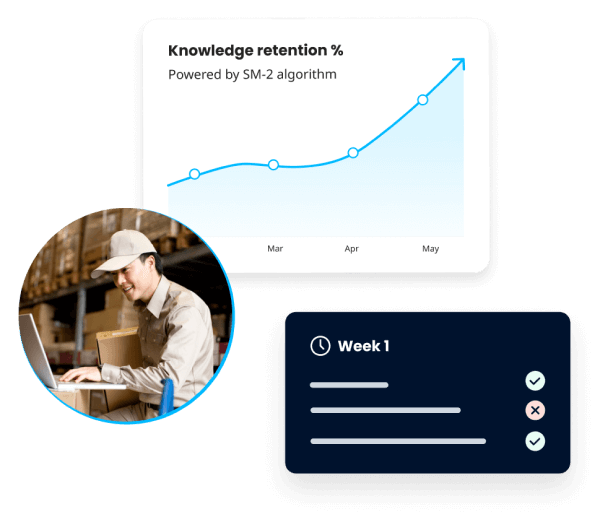
By using data, trainers can identify struggling learners, tailor interventions, and improve learning experiences. Despite the power of data, it’s important to prioritize data privacy and guarantee the ethical use of learner data in compliance with privacy regulations.
10. Blended Learning: The Hybrid Approach
Blended learning combines traditional face-to-face instruction with online learning components. In 2023, the blended learning model will continue to gain popularity as it offers the best of both worlds. You won’t have to pick and choose which format is better for your learners. You can take advantage of both and play to their strengths.
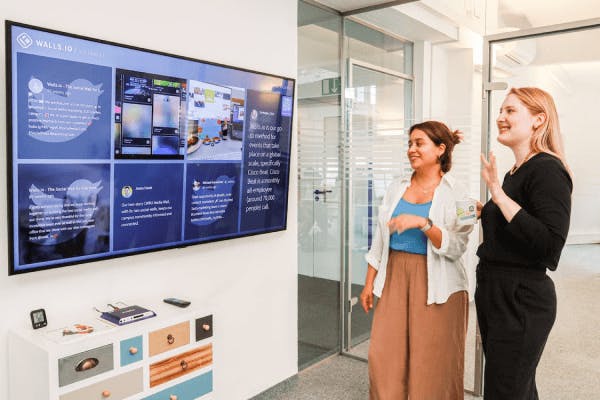
Learners can benefit from interactive online modules, collaborative activities, and instructor-led sessions. They can take advantage of the flexibility and interactivity of online modules, the social and cognitive benefits of collaboration, and the guidance and expertise of instructors to maximize their learning outcomes.
11. Embracing Remote Learning
The COVID-19 pandemic accelerated the adoption of remote learning worldwide. Even though lockdowns are now a thing of the past, remote learning will remain a significant learning trend as it offers flexibility, accessibility, and cost-effectiveness.

This is all thanks to remote learning, giving access to high-quality training from anywhere, and breaking down geographical barriers. It also empowers individuals to balance work, family, and training commitments. You only have to watch out for challenges such as the digital divide, online security, and maintaining social connections in remote learning environments.
12. Upskilling for the Future
In a rapidly evolving job market, upskilling has become essential to staying competitive. In 2023, identifying in-demand skills and job market trends will be crucial. Your learners need to continuously update their skill sets to meet the demands of emerging industries and technologies.

Upskilling can be achieved through online courses, certificates, workshops, and industry collaborations. Like continuous learning, it’s crucial to proactively invest in lifelong learning and acquire transferable skills to adapt to future workplace challenges.
EdApp is a mobile learning management system designed for today’s digital habits, delivering more engaging and effective micro-learning directly to learners anytime and anywhere.
Sign up for this mobile learning tool today.
Author
Stephanie Escuadro
Stephanie is an eLearning content writer for EdApp, a microlearning solution designed for today's digital habits. She creates content about cutting-edge learning technologies and resources to help companies deliver great training experiences. When not absorbed in writing, she spends her time taking care of her dog and binge-watching.
